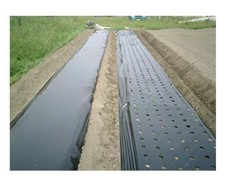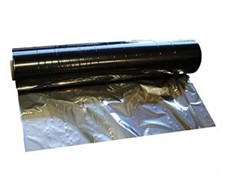How to Clean Up Undeposited Funds in QuickBooks Online
- pragati
- May 31, 2023
- Bookkeeping
- 0 Comments
By managing undeposited funds effectively, businesses can gain a clear picture of their cash flow, reduce errors, and maintain a precise record of their financial activities in QuickBooks Online. The funds have now been moved from the Undeposited Funds account to your selected bank account, and the deposit is recorded in QuickBooks. Make sure to reconcile your bank account in QuickBooks to ensure that it matches your actual bank statement. You must use the Undeposited Funds account only for payments that are physically collected, including cash and paper checks. Identifying and addressing duplicate transactions can significantly contribute to limitations of capital budgeting chron com fixing undeposited funds in QuickBooks Online, ensuring accuracy and consistency in financial records.
What is the Undeposited Funds Account in QuickBooks?
- You’ll decide which account in QuickBooks to put the deposit into when you combine.
- You’ll also notice that when you click on the deposit, it expands and you can choose to edit.
- Ensure that the deposits shown in your Deposit Detail report match your bank activity exactly.
- I understand that you’re looking to clear out or deposit undeposited funds.
- Let’s look at how to record sales receipts and deposit the money you receive in QuickBooks.
Getting rid of undeposited funds in QuickBooks involves a meticulous process of clearing and reconciling pending payments to ensure accurate financial records and transparency. It prevents overstatement of income and avoids discrepancies in reconciliations, which are crucial for decision-making and financial analysis. To resolve this issue, it is essential to regularly review bank and credit card statements, categorize transactions accurately, and use payment matching to identify and merge duplicate entries. Utilizing the ‘Find & Match’ accumulated depreciation and depreciation expenses feature and reconciling accounts can also aid in identifying and rectifying any redundant transactions. When you receive cash and check payments from customers, you first place them into the Undeposited Funds account instead of directly depositing them in your actual bank account. When all checks and cash payments are entered and you’re ready to deposit them, you can take them out of the Undeposited Funds account and make a single deposit in your bank account.
So, you need to combine your five separate US $100 records in QuickBooks to match what your bank shows as one US $500 deposit. Turning off undeposited funds in QuickBooks Online requires careful adjustments to the settings and preferences, ensuring that all financial transactions are accurately recorded and reconciled. It’s crucial to maintain consistency in updating and clearing undeposited funds to avoid discrepancies and errors in financial reporting, thereby upholding the integrity of the accounting system. This step involves reviewing all transactions to confirm that the funds awaiting deposit match the actual amounts received.
By meticulously comparing the records, businesses can pinpoint any undeposited funds, which may have resulted from delayed deposits or unrecorded income. Once you have logged into your QuickBooks Online account, navigate to the ‘Banking’ tab, and then select ‘Make Deposits.’ From here, you can review and select the undeposited funds you want to clear. It’s crucial to ensure that the the difference between implicit and explicit costs deposits are matched with the corresponding invoices and payments, as this will accurately reflect the financial transactions. These funds serve as a temporary holding account and allow for grouping multiple payments together before depositing them into the designated bank account. This process streamlines the bank reconciliation process and ensures that the company’s financial records accurately reflect the transactions.
Sales receipts for payments you process outside of QuickBooks
In case of any discrepancies, double-check the payment and deposit entries to ensure accuracy. Matching deposits to invoices and payments is a critical aspect of clearing undeposited funds in QuickBooks Online, ensuring accurate reconciliation and financial tracking. The process of clearing undeposited funds in QuickBooks Online involves several important steps to ensure accurate recording and reconciliation of payments. This process involves reconciling the undeposited funds account regularly, which can prevent discrepancies in the financial reports.
Sending invoices and recording sales receipts
This begins by accessing the Undeposited Funds account in QuickBooks and reviewing all pending payments, ensuring that each transaction matches the corresponding customer invoice or sales receipt. Once verified, the payments should be deposited into the appropriate bank account, and the transactions should be reconciled to reflect the accurate financial status. Identifying and addressing undeposited funds is crucial for financial accuracy, as it ensures that all income is properly recorded and accounted for. Reconciling accounts allows businesses to gain a clear understanding of their financial status, enabling them to make informed decisions for future financial planning and budgeting. It also aids in maintaining compliance and transparency, contributing to the overall integrity of the financial records.
The main purpose of the Undeposited Funds account is to make bank reconciliations easier. It does this by allowing you to group cash and paper checks into a single deposit, mirroring how banks process and deposit your payments. When reviewing your transactions, it’s easier to spot discrepancies and missing deposits since your QuickBooks records align with the combined deposits on your bank statement. This not only promotes transparency and accountability but also aids in accurate cash flow management and budgeting. This process involves cross-referencing bank statements, invoices, and receipts to identify any discrepancies or missing transactions.
Posting each payment to the Undeposited Funds account and then recording the deposit in QuickBooks Online allows you to do this. The Undeposited Funds account in QuickBooks Online is a holding account where you temporarily record customer payments before grouping and depositing them as a lump sum into your bank account. Using your deposit slip as a reference, combine the check and cash payments with a bank deposit. Deleting undeposited funds in QuickBooks requires careful consideration and accurate adjustments to ensure that all financial records remain consistent and transparent.




